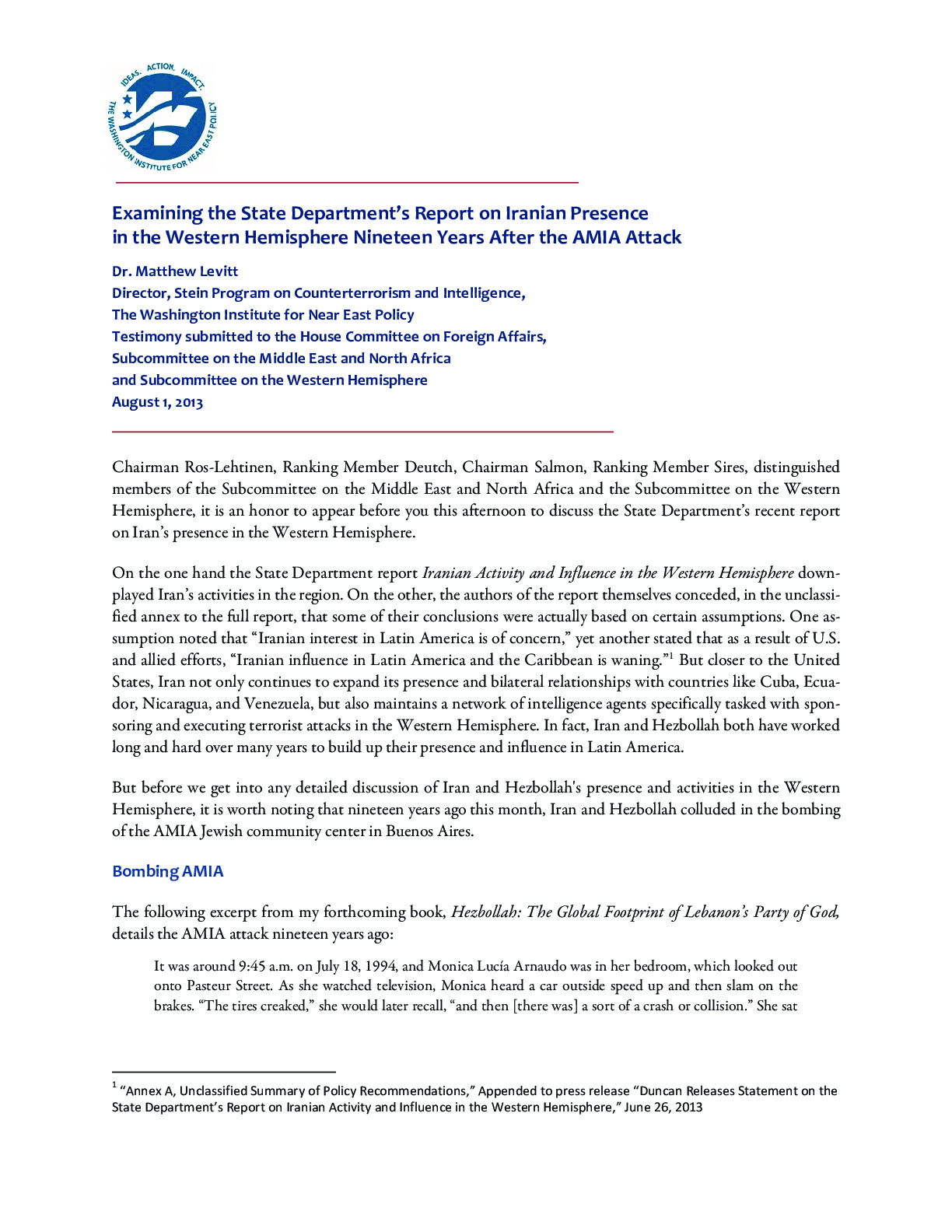
- Policy Analysis
- Congressional Testimony
Examining the State Department's Report on Iranian Presence in the Western Hemisphere Nineteen Years After AMIA Attack

The director of the Institute's Stein Program on Counterterrorism and Intelligence addressed a House hearing on Iran's longstanding efforts to establish terrorist networks in the Americas. The following is an excerpt from his prepared remarks; download the PDF to read the full testimony.
The same day the State Department released its report on Iranian Activity and Influence in the Western Hemisphere, highly respected Argentine prosecutor Alberto Nisman, who served as special prosecutor for the investigation into the AMIA bombing, released a 500-page document laying out how the Iranian regime has, since the early 1980s, built and maintained "local clandestine intelligence stations designed to sponsor, foster and execute terrorist attacks" in the Western Hemisphere. Nisman found evidence that Iran is building intelligence networks identical to the one responsible for the bombings in Argentina across the region -- from Brazil, Paraguay, Uruguay, Chile, and Colombia to Guyana, Trinidad and Tobago, and Suriname, in addition to a number of others. He concluded, "In other words, the AMIA bombing did not constitute an isolated event."
Nisman's earlier 2006 report on the AMIA bombing already demonstrated how Iran established a robust intelligence network in South America in the early 1980s. One document, seized during a court-ordered raid of the residence of an Iranian diplomat north of Buenos Aires, included a map denoting areas populated by Muslim communities and suggested an Iranian strategy to export Islam into South America -- and from there to North America. Highlighting areas densely populated by Muslims, the document informed that these "will be used from Argentina as [the] center of penetration of Islam and its ideology towards the North American continent...
House Committee on Foreign Affairs




